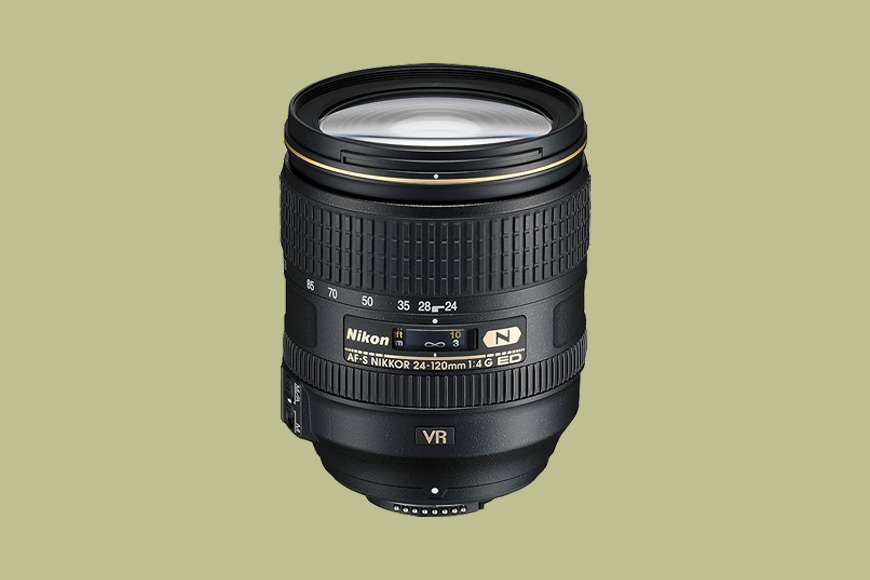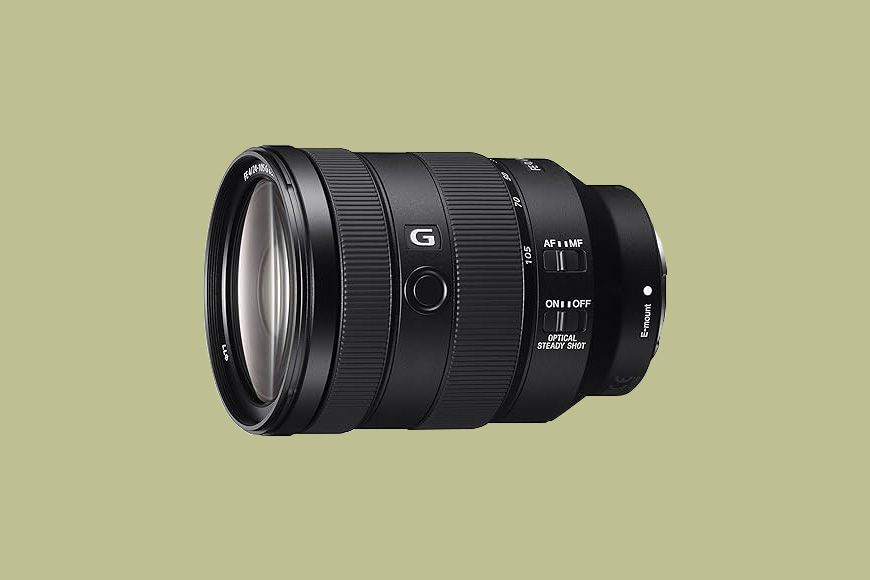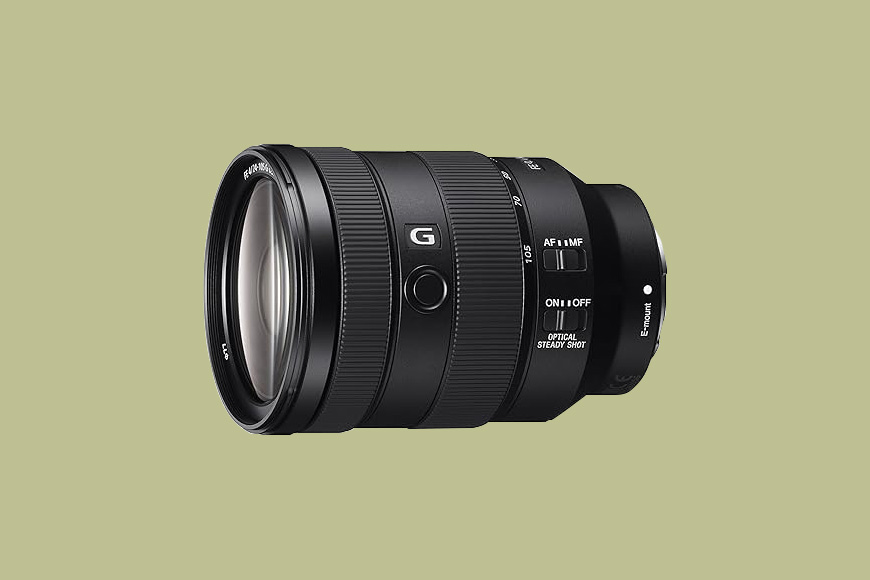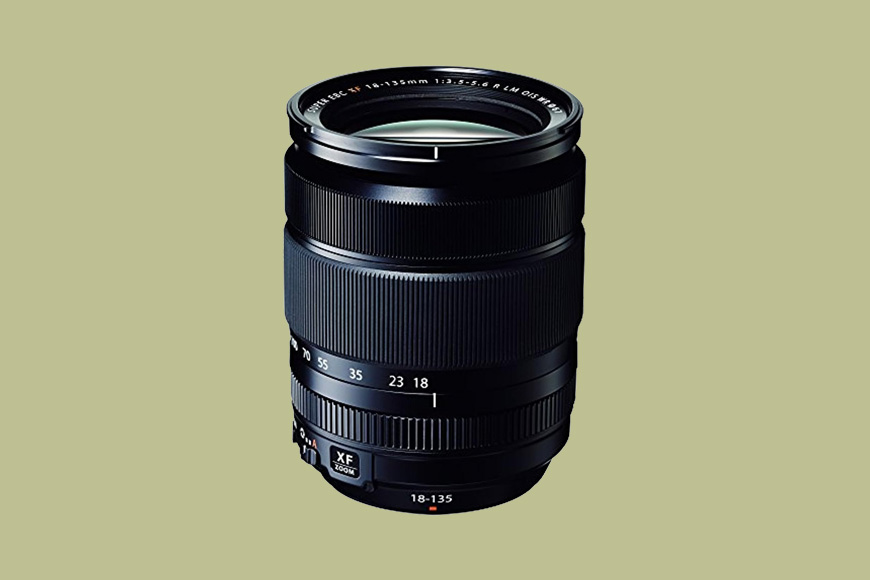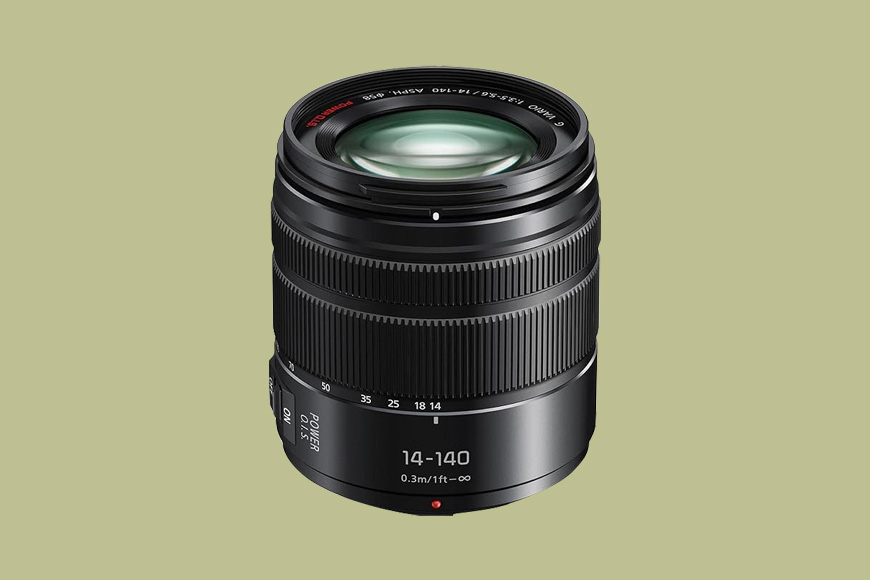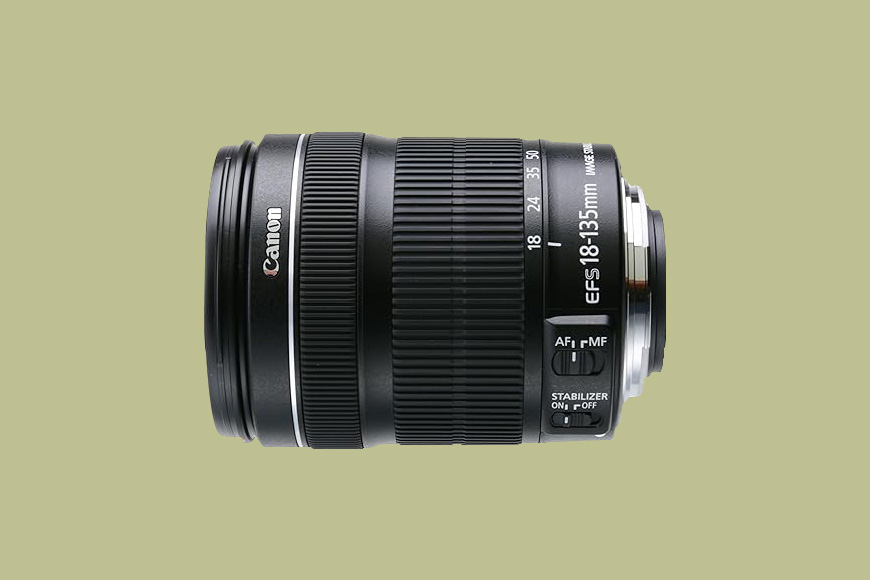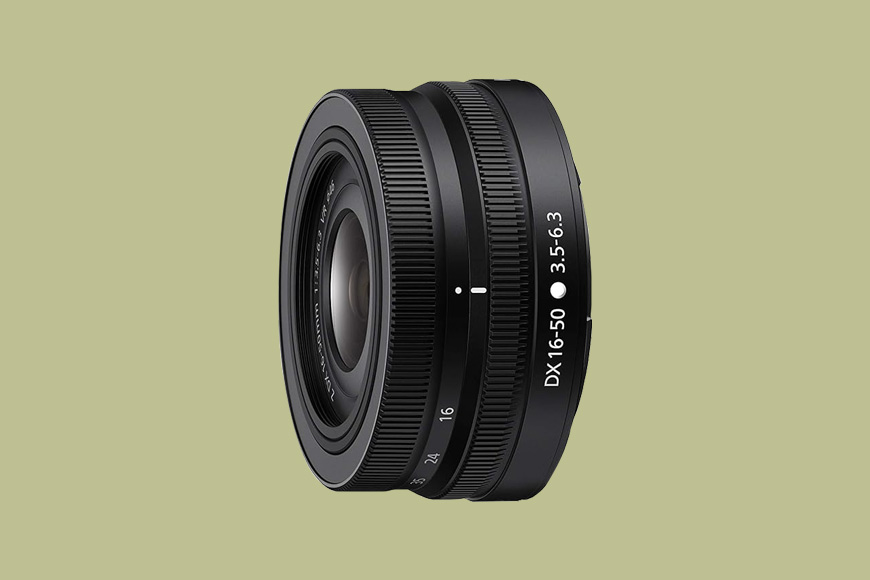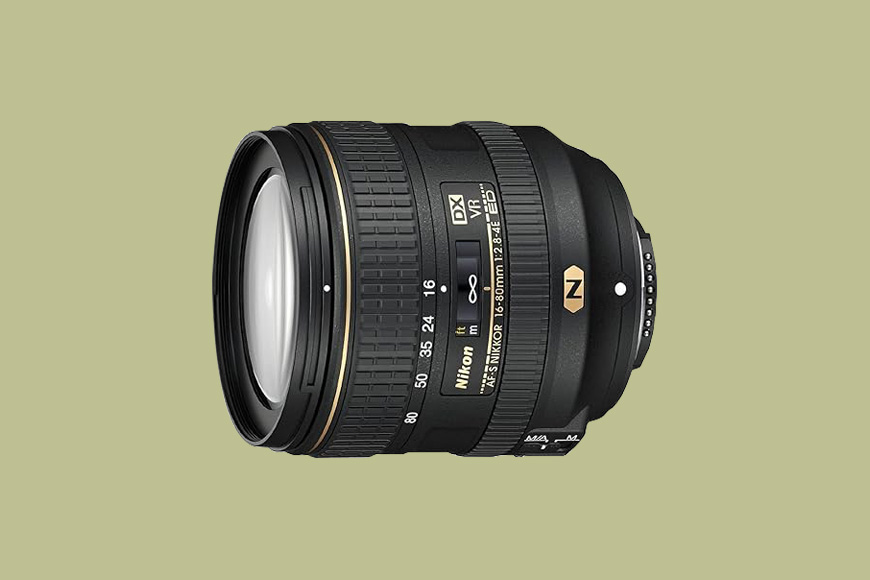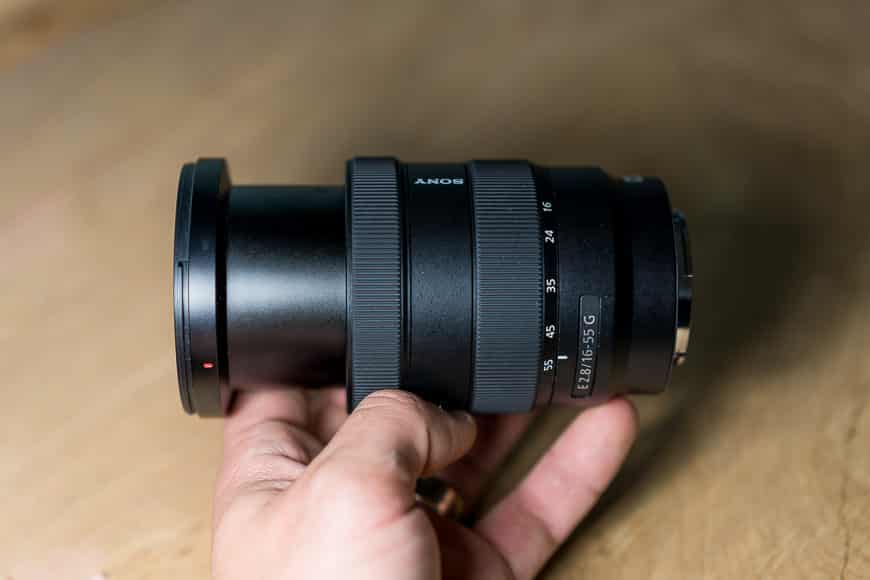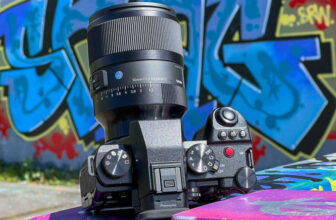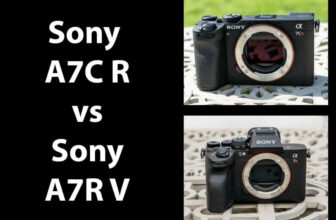
[adinserter block=”1″]
This guide will help you find the best lens for travel photography, depending on your camera.
The right choice of lens can elevate your travel storytelling skills, allowing you to express and encapsulate the essence of each destination.
From wide-angle primes for shooting sweeping landscapes to versatile zoom lenses for dynamic versatility, the choices can be bewildering.
So, let us take you by the hand and walk you through some of the best options.
How to Choose the Best Lens for Travel Photography
When selecting the best lens for travel photography, there are several key qualities to consider:
- Versatility: A good travel lens needs to be versatile. You want a lens that can handle various situations, from rolling countryside landscapes to detailed street scenes. A zoom lens with a range like 24-70mm or 18-135mm can be ideal, offering both wide-angle and moderate telephoto perspectives.
- Size and Weight: Traveling often involves moving around a lot, sometimes in cramped conditions. So, the size and weight of the lens are crucial. A compact and lightweight lens will be less burdensome during long days of sightseeing or hiking.
- Aperture: While zoom lenses with wide apertures like f/2.8 are great for low light and creating a shallow depth of field, they’re often heavier and more expensive. An f/4 lens strikes a good balance – it’s typically lighter, more compact, and less costly, yet still performs well in various lighting conditions.
- Prime or Zoom: A prime lens is typically smaller and lighter than a zoom lens, but it doesn’t offer the same versatility with only a single focal length. If you have space in your travel bag, a combination of one small prime lens (like a nifty-fifty) and one zoom would be ideal.
- Image Stabilization: This feature is a must for travel photographers, especially when shooting in low light or when using slower shutter speeds. It helps reduce the blurriness caused by camera shake, ensuring sharper images.
- Durability: A travel lens should be durable enough to withstand different environments. Look for lenses with weather-sealing if you plan to shoot in various outdoor conditions.
- Image Quality: High image quality is, of course, a priority. Look for lenses that offer sharp, clear imaging across their aperture range and focal lengths.
Best Full Frame Lenses for Travel Photography
Canon EF 24-105mm f/4L IS USM (Best Canon EF Zoom Lens for Travel Photography)
- Great optical quality
- Durable build
- Versatile focal length
- Image stabilization
- Relatively expensive
- Some distortion at 24mm
The Canon EF 24-105mm f/4L IS USM is a travel photography favourite, thanks to its blend of versatility and image quality.
As part of Canon’s esteemed L-Series, it’s well-known for superior optical performance. It delivers exceptional image quality and sharpness, ensuring your travel photos are (hopefully) visually stunning.
It has a robust build and is completely weather-sealed. It’s also surprisingly light and compact, considering its focal range and capabilities.
Its 24-105mm focal range provides a huge amount of flexibility and is ideal for capturing everything from landscapes to detail shots.
The constant f/4 aperture across the zoom range makes exposure control very simple and allows you to maintain consistent settings in varied lighting conditions.
It’s also fast enough to be good in low light conditions and lets you play with a shallow depth of field, especially when fully extended.
The camera lens also comes with built-in image stabilization, which is essential for the kind of handheld shooting that’s normal when travelling.
Those looking for a less expensive alternative could consider the Sigma 24-105mm f/4 DG OS HSM [Amazon | B&H] – although you should bear in mind that it’s not weather-sealed.
Canon RF 24-105mm f/4 L IS (Best Canon RF Zoom Lens for Travel Photography)
- Weather sealed
- Excellent build quality
- Image stabilisation
- Excellent autofocus capabilities
- f/4 is not the fastest
- Expensive
The Canon RF 24-105mm f/4 L IS lens is among the mirrorless staples for Canon users.
The 24-105mm focal length is a versatile focal range, suitable for capturing wide-angle landscapes, portraits, and even some telephoto shots.
It’s an ideal range for travel photographers wanting to avoid constantly switching lenses.
As an L series camera lens, it’s very well-built, compact, and lightweight, with a robust construction and weather-sealing for added durability.
With its constant f/4 aperture throughout the zoom range, you get consistent exposure control, and the lens has impressive optical quality, producing sharp images with minimal distortion and chromatic aberrations.
The Canon RF 24-105mm f/4L IS also has in-built image stabilization. That means you’ll be able to take sharper images, even shooting handheld in low-light conditions, a common scenario when travelling.
Its Dual Nano USM (Ultrasonic Motor) also ensures smooth, accurate, and quiet autofocus, giving you the ability to get all your shots in focus, regardless of how challenging your subjects or environments are.
Nikon AF-S FX NIKKOR 24-120mm f/4G (Best Nikon FX Zoom Lens for Travel Photography)
- Excellent image quality
- Well-designed
- Versatile focal range
- Image stabilization
- Great autofocus
- Some barrel distortion
- Relatively expensive
The Nikon AF-S FX NIKKOR 24-120mm f/4G is a great all-round lens for the Nikon shooter.
It has a nearly identical focal range to the Canon lens above and, as such, provides users with great versatility and the ability to shoot a wide range of photographic scenarios.
You can comfortably shoot expansive landscapes to detail shots and portraits. It’s the kind of lens you could just leave on your camera and be ready for anything.
Its constant aperture throughout the zoom range ensures consistent exposure settings. That means that, whatever the lighting conditions, you’ll be ready and won’t have to make a lot of setting changes to adapt.
Like the Canon, it’s also a high-end product that delivers sharp, clear images throughout its focal range.
It has Nano Crystal Coating, too, which reduces chromatic aberration and lens flare, ensuring consistently high image quality whatever the lighting conditions.
This lens is surprisingly compact and lightweight, given its focal range, and is fully weather-sealed, so you can confidently take it on your next adventure.
The Nikon AF-S FX NIKKOR 24-120mm f/4G has optical image stabilization – essential for handheld shooting – and its Silent Wave Motor (SWM) technology provides lightning-fast and silent autofocus.
Having such quick and quiet autofocus is a definite bonus during travel, for street photography, and for capturing candid scenes like a ninja.
Nikon Z 24-120mm f/4 S (Best Nikon Z Zoom Lens for Travel Photography)
- Image stabilization
- Excellent optical quality
- Great autofocus
- Customizable control ring
- Versatile focal length
- f/4 not the best in low light
- Expensive
For the travel photographer shooting Nikon mirrorless, the Nikon Z 24-120mm f/4 S is a stellar choice.
Once again, it’s a lens with a 24-120mm focal range, which provides travel photographers with great versatility.
Whether you’re shooting landscapes or zooming in on details, you can adapt without the need for frequent lens changes.
This lens also has a constant f/4 aperture throughout its zoom range, which means consistent exposure. Plus, it’s easy to adjust your settings when moving between varied lighting conditions.
It’s compact and lightweight, given its capabilities, and has in-built image stabilization and extremely fast autofocus.
Travel photographers generally shoot most scenes handheld, so image stabilization is essential, and it’s always handy to have quiet and quick autofocus so you can react quickly and be discreet.
The Nikon Z 24-120mm f/4 S boasts exceptional optics and delivers crisp, colorful images with excellent contrast.
One nice feature is the lens’ customizable control ring, which allows travel photographers to adjust settings like aperture, ISO, or exposure compensation on the fly.
This ability to tailor-make your shooting experience adds another level of versatility to this as a travel lens.
Sony FE 24-105mm f/4 (Best Sony FE Zoom Lens for Travel Photography)
- Great image quality
- Weather-sealed
- Image stabilization
- Versatile focal length
- A little heavy
- Limiting aperture
Although it lacks a few millimeters of focal length compared to the others in this section, the Sony FE 24-105mm f/4 is a travel photographer favorite known for its exceptional performance and versatility.
Starting at 24mm, the lens has wide-angle capabilities to help you shoot landscapes and architecture. And 105mm is still enough for detail shots and portraits.
Like every other lens in this section, it has a constant f/4 aperture throughout the zoom range. That makes it easy on you when it comes to changing settings, gives you some depth of field to play with, and helps you out in low-light conditions.
Travel photography often involves shooting in dynamic environments, so having built-in image stabilization is a must, particularly when shooting handheld at longer focal lengths. This lens delivers.
It’s also weather-sealed, so you can take it anywhere.
But what about its image quality? Well, Sony is renowned for producing lenses with outstanding optical performance, and the FE 24-105mm f/4 is no exception.
This lens produces sharp images with minimal distortion, chromatic aberration, and vignetting, so you should end up with stunning travel images.
For those photographers who need more range or want to save some money, consider the Tamron 28-200mm f/2.8-5.6 Di III [Amazon | B&H].
Best APS-C Lenses for Travel Photography
APS-C cameras are more compact than their full-frame brothers and sisters, and they often have the specs to deliver great images.
So, if you’re someone who has one of these cameras, these lenses could be for you.
Fujifilm XF 18-135mm f/3.5-5.6 (Best Fujifilm Zoom Lens for Travel Photography)
- Lightweight and compact
- Weather-sealed
- Excellent image quality
- Image stabilization
- Variable aperture
- Some image softness
The Fujifilm XF 18-135mm f/3.5-5.6 lens (full review here) is pretty popular thanks to its wide focal range and compact design.
The best feature of this lens is clearly its impressive focal range. It’s both a wide-angle lens and a telephoto lens, so provides users with exceptional versatility for capturing everything from landscapes to distant subjects.
Weighing in at a mere 490 grams, the XF 18-135mm is also remarkably lightweight. So, it’s an excellent choice for travel photographers who prioritize portability.
The lens is fully weather-sealed, providing protection against dust and moisture, and is equipped with Fujifilm’s Optical Image Stabilization (OIS) technology.
With this, photographers can shoot handheld at slower shutter speeds without sacrificing image quality.
And, as you’d expect from Fuji, the lens has exceptional optical quality. The images are sharp, with well-rendered colors, minimal distortion, and chromatic aberration – a travel lens that can be relied on.
Panasonic Lumix 14-140mm f/3.5-5.6 II (Best MFT Zoom Lens for Travel Photography)
- Lightweight and compact
- Extremely versatile focal length
- In-built image stabilization
- Great autofocus
- Variable aperture
- Plastic construction
Just a note before I get into it: there are multiple versions of this lens, so it can be a bit confusing. The latest version, which is the version you want, says H-FSA14140 on the box and the barrel.
And if you get it, you’ll get a lens that is well-liked in the travel photography community for its broad focal range and compact design.
With its extensive 14-140mm range, it’s the most versatile lens in this guide. There is very little you wouldn’t be able to capture with it, thereby reducing the need to change lenses.
It’s also, especially given this focal range, exceptionally compact and lightweight and weighs in at a mere 265 grams. No need to use up much space or add unnecessary weight to your camera bag.
Panasonic’s Power O.I.S. technology is also integrated into the lens, providing effective image stabilization to ensure sharp, blur-free images, even when shooting zoomed-out.
It boasts an excellent autofocus system, fast and virtually silent. That’s particularly good for travel photography as you can shoot in quiet or intimate settings and capture moments without disturbing the atmosphere.
Thanks to both those last features, the smooth zoom and silent autofocus, the Lumix 14-140mm f/3.5-5.6 II is also well-suited to videography, adding an extra dimension to your travel storytelling.
Another option is the Olympus 12-200mm f/3.5-6.3 Lens [Amazon | B&H], though by most accounts, the Panasonic is a better performer.
Canon EF-S 18-135mm (Best Canon APS-C Zoom for Travel Photography)
- Light and compact
- Excellent autofocus
- Affordable
- Great image quality
- Made of plastic materials
- Variable aperture
Weighing in at just 480 grams, the EF-S 18-135mm is a relatively lightweight and compact lens – important for travel photographers who want to minimize weight and maximize space in their gear bag.
And, with its 18-135mm focal range, whether you’re shooting landscapes, portraits, or distant subjects, the Canon EF-S has you covered.
The lens features Canon’s STM (Stepping Motor) autofocus technology, providing smooth and silent focusing during both still photography and video recording.
It is also equipped with Dynamic Image Stabilization (IS), which reduces the impact of camera shake.
This feature is invaluable for handheld shooting, ensuring sharp images even when using the lens at longer focal lengths or in low-light conditions – a common scenario in travel photography.
The overall image quality is excellent, too, something that Canon is well-known for. The images are sharp, well-contrasted, and with good color reproduction across its focal range.
Nikon Z DX 16-50mm f/3.5-6.3 VR (Best Nikon Z DX Zoom for Travel Photography)
- Extremely lightweight and compact
- Good autofocus
- Good focal range
- Image stabilization
- Slightly cheap feel
- Variable aperture
The Nikon Z DX 16-50mm is exceptionally compact and lightweight, making it an ideal companion for travel photographers.
The lens’s sleek design ensures it takes up minimal space in your gear bag. It’s so sleek it almost looks like a pancake lens!
Not only that, but the lens also has an electrically retractable mechanism, allowing it to collapse into an even more compact form when not in use.
Despite its small form factor, it nevertheless covers a decent focal range, from 16mm to 50mm. This makes it well-suited for a variety of travel scenarios, from wide-angle landscapes to portraits.
Overall, the image quality is good, and sharp throughout the range. That’s aided by built-in stabilization that eliminates the effects of camera shake when shooting handheld.
Equipped with a Stepping Motor autofocus system, the Nikon Z DX 16-50mm has fast, quiet, and precise focusing. This is super useful when shooting travel photos, as you need to react quickly and often be discrete.
Nikon AF-S DX 16-80mm f/2.8-4E (Best Nikon DX Zoom for Travel Photography)
- Image stabilization
- Fast variable aperture
- Versatile focal length
- Great image quality
This lens gives you a bit more focal range to play with than the one above, and a faster variable aperture.
16-80mm gives you a lot of flexibility in terms of what you can shoot. It’s wide enough for architecture and landscapes, and also perfect for portraits and details shots.
It’s the kind of lens that, if you’re thinking of an all-around solution, this could be it.
Although variable aperture lenses aren’t the most convenient, f/2.8-4, gives this lens impressive low-light performance and creative depth of field control.
Its brighter aperture is especially good for dimly lit environments, so you can capture stunning images in indoor settings or even as the sun sets.
The lens also features Nikon’s Vibration Reduction technology, which ensures clear handheld images even at low shutter speeds and the end of the range.
The Nikon AF-S DX 16-80mm f/2.8-4E has fast and accurate autofocus, as well as Nikon’s high-end Nano Crystal Coating and Extra-Low Dispersion elements, which help reduce lens flare, ghosting, and chromatic aberrations.
This means that the images it produces are high quality and with accurate color reproduction, even in the kind of challenging lighting situations that commonly occur in travel photography.
Sony 16-55mm f/2.8 G (Best Sony E Zoom Lens for Travel Photography)
- Fast lens
- Weather-sealed
- Great optics
- Versatile
- Expensive
- No image stabilization
This is an extremely versatile lens with a constant f/2.8 aperture throughout the focal range.
That bright aperture somewhat compensates for the lens’ lack of in-built image stabilization and allows for excellent low-light performance and creative control over the depth of field.
It’s compact and fairly light, and has a robust, weather-sealed build that can comfortably withstand the rigours of travel photography.
As photographers have come to expect from Sony, you also get excellent image quality, with sharp pictures and true-to-life colors, and great autofocus capabilities, essential for capturing those sometimes fleeting travel moments.
Best Prime Lenses for Travel Photography
In terms of both optical and build quality, nothing really beats primes.
So, if you can find one that suits your shooting style, choosing just one or two to put in your bag could be a good way to go.
The links below each section are to the full-frame equivalents.
The 35mm
As a focal length, 35mm is justifiably popular, as it provides a natural perspective that matches the field of view of the human eye.
They are sometimes referred to as the ‘storytelling lens’ because, given this natural feel, photographers easily feel in sync with their camera, which makes it easier to compose scenes.
They are ideal for capturing a wide range of scenarios, from street photography to environmental portraits.
Many 35mm primes feature wide apertures, such as f/1.4 or f/2, so they’re good in low light and can also handle high shutter speeds. This makes them extremely versatile.
Possibly the best lens for travel photography, and any photography.
[ Canon EF | Canon RF | Nikon FX | Nikon Z | Nikon Z DX | Sony FE | Sony E | Fujifim XF | MFT ]
The 24mm
A 24mm prime provides a broader view, allowing you to include more of a scene in your frame.
This makes it perfect for capturing expansive landscapes or architecture, particularly when you want to emphasize the scale or beauty of a location.
It’s also good for photographing, for example, bustling marketplaces or cultural events, as you can get right in the centre of the action and still fit plenty into the frame.
Despite being a wider focal length, a 24mm is also good for environmental portraits, as it can capture subjects in their surroundings, providing context and storytelling elements.
[ Canon EF | Canon RF | Nikon FX | Nikon DX | Nikon Z | Nikon Z DX | Sony FE | Sony E | Fujifim XF | MFT ]
The 50mm
The nifty fifty is renowned for its flattering portrait perspective that allows you to isolate subjects from the background.
Many 50mm primes have wide apertures (f/1.8 or f/1.4), so you can create beautiful background blur and really emphasize your subject.
Those wide apertures mean they generally have great low-light performance, too.
50mm is also a good focal length for detail shots, such as a local artisan’s hands or the textures of street food or handicrafts.
[ Canon EF | Canon RF | Nikon FX | Nikon DX | Nikon Z | Nikon Z DX | Sony FE | Sony E | Fujifim XF ]
What’s Best for Travel Photography: One Lens, Two Lenses, or a Three-Lens Kit?
Choosing the right combination of lenses for your travel photography kit is an important decision that can have a significant impact on what you can capture.
Do you travel as light as possible and take only one lens? Should you take more lenses to cover more situations?
Which focal lengths should you choose?
A telephoto lens? Zoom lenses or primes?
Let’s take a look at a few of the options.
One Lens Kit
My ideal one-lens kit would be my go-to lens for every kind of photography, a 24-70mm f/2.8, or a 24-105mm f/4.
These are generally high-quality lenses, and they are extremely versatile.
With their broad focal ranges, you can take wide-angle shots and also zoom in for portraits and other detail shots.
As you can shoot so much with them, and often won’t feel limited in any way, you can focus on being in the moment and just enjoy the photography.
Having one lens also means less weight to carry and less space taken up in your bag – perfect for those who prioritize traveling light.
If you have an f/2.8 aperture, it’s also fast enough that you can shoot in even challenging light conditions. With f/4, you may struggle more, but as a trade-off, you’ll get the extra focal length.
Two Lens Kit
My ideal two-lens kit would have a 24-70mm f/2.8 or 24-105 f/4, paired with either a 50mm f/1.4 or an 85mm f/1.2.
The 24-70mm covers a wide focal range, while 50mm and 85mm primes excel at portraits, detail shots and low-light situations.
As I’ve already run through the features of the 24-70mm and 24-105mm, I won’t repeat myself, so let’s consider the primes.
Choosing either of these primes will enhance your creativity. Their wide apertures can create beautiful background blur and enhance low-light performance.
Not only this, but shooting with primes forces you to move around more and immerse yourself in a scene to try out compositions, whereas, with a zoom lens, you can stand in one place and let the lens do more of the work.
In my opinion, when you’re traveling, anything that forces you to get more involved is a good thing.
A two-lens setup is also still relatively compact compared to a three-lens kit.
Three-Lens Kit
My ideal three-lens travel photography kit would be made up of a 24-70mm f/2.8 or 24-105mm f/4, with either a 50mm f/1.8 or 85mm f/1.2, and either a wide-angle lens (such as a 10-22mm) or a longer prime, such as a 135mm or a 200mm.
I’ll just cover the third lens here, to avoid repeating myself.
My reasoning for these two choices is that, with a third lens, you are starting to get into specialist travel photography.
The first one or two lenses are all-round options that will basically help you photograph pretty much anything.
When choosing a third lens, given it’s going to add more weight and cost, and is not totally essential, you need to pick something that will help you photograph something specific that your other two lenses might struggle with.
If you particularly like to photograph architecture or panoramas, you might want to consider a 10-20mm (or something close to those focal lengths).
If you like to take pictures with a lot of lens compression, shoot wildlife, landscape details, or creative portraits, a longer prime will definitely help.
With a three-lens kit, you’ll be ready for anything.
Single Zoom vs. Multiple Primes
When choosing the best lens for travel photography, you of course have to consider the differences between zoom lenses and primes.
If you choose to take a single zoom lens, you will have the ultimate in convenience and versatility.
You’ll never need to change your lens (or feel like you want to).
But there are limitations. They’re often not as good in low light, and they give you less creative control over depth of field compared to primes.
With primes, you get enhanced low-light performance, sharper image quality, and creative control with different focal lengths and apertures.
But, on the flipside, you’ll need to make (possibly frequent) lens changes, due to potential gaps in focal length coverage, and primes tend to weigh more.
FAQs About the Best Lens for Travel Photography
Which lens is used for travel photography?
Many lenses can be used for travel photography.
You can use a telephoto lens, zoom lenses or primes, and you can choose the focal length you need.
The important thing is that, whatever camera lenses you choose, they’re versatile enough that you can shoot in a variety of environments and situations.
What focal length is best for travel?
The best lens for travel photography in terms of focal length is the most versatile one.
Generally, if you have to choose one lens, a zoom with a focal range of 24-70mm or 24mm-105mm is best.
What is the best prime lens for travel photography?
The best prime lens for travel photography would be, depending on your shooting style and preferences, one of either a 24mm, 35mm, or 50mm. Only if you shoot wildlife would you need a telephoto lens.
What two lenses should I have for travel photography?
If you just want to take two camera lenses with you, I recommend you take one zoom lens (for versatility) and one prime (for creativity).
[adinserter block=”1″]
Credit : Source Post


